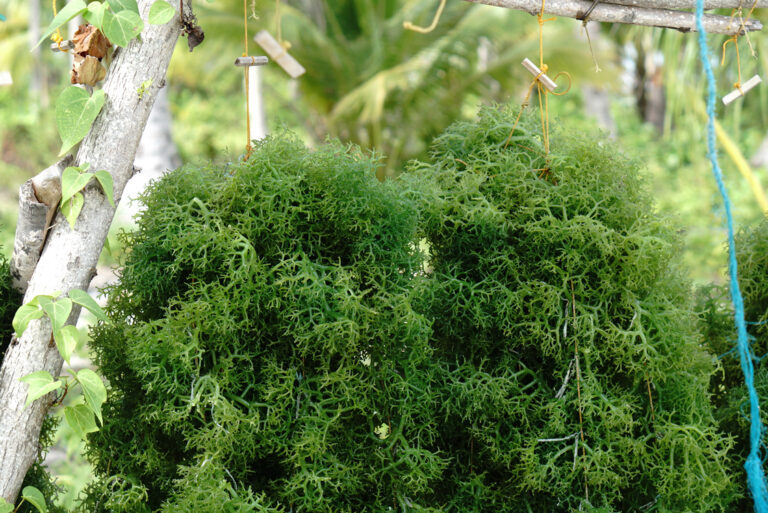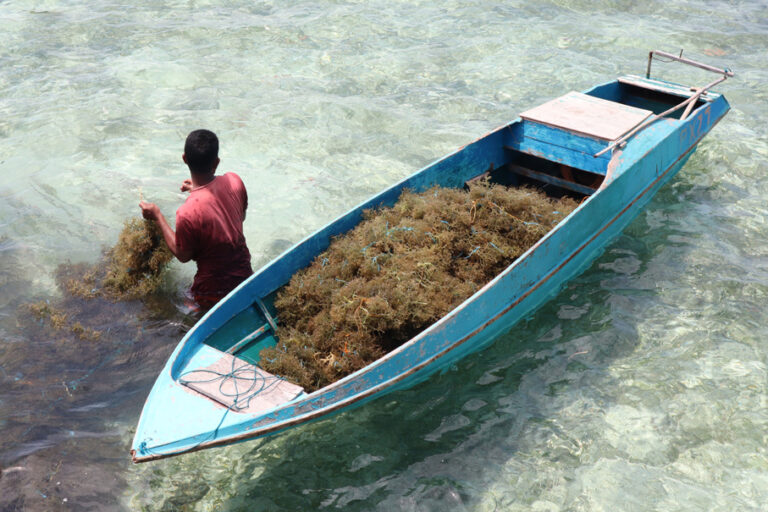In the far south of the Philippines, on the island province of Tawi-Tawi, seaweed farming is more than just a livelihood it is a way of life. Men venture out in small wooden boats to harvest seaweed from the Celebes Sea, while women carry the heavy bundles up wooden ladders to stilt houses, where they prepare the harvest for sale. For families like that of Imilita Mawaldani Hikanti, cultivating Eucheuma and Kappaphycus seaweeds, locally called agal-agal, has been passed down through generations and remains the primary source of income.
Tawi-Tawi, known as the “Seaweed Capital of the Philippines,” produces nearly 40 percent of the country’s annual 600,000-tonne seaweed output. Most of the harvest is exported to produce carrageenan, a widely used gelling agent in food processing. However, seaweed farmers face significant challenges, including fluctuating market prices and the spread of plant diseases. In 2024, the price of raw dried seaweed dropped to as low as PHP 25 per kilo, forcing many farmers to operate at a loss. Some have turned to unsustainable activities such as cutting mangroves for charcoal or spearfishing to survive.

One major threat is ice-ice disease, a bacterial infection linked to rising sea temperatures caused by climate change. Once infected, seaweed deteriorates quickly, leaving farmers with the difficult choice of harvesting early or losing their entire crop.
To address these challenges, initiatives have been launched to strengthen the seaweed value chain. Training programs are equipping farmers with climate-smart farming techniques, better handling practices, and ways to add value to their products. Farmers learn how to prepare planting materials, set up farms, and explore high-value seaweed-based products. Emphasis is placed on improving quality, which can significantly increase profitability.
Beyond traditional sales, seaweed offers opportunities in food, industrial, agricultural, and energy sectors. Farmers are being introduced to alternative markets, including bio-stimulant production and seaweed-based snacks like chips or ingredients for local delicacies. Some entrepreneurs, like Sitti Juhalla M. Hassan, are incorporating seaweed purée into products such as puto and mamon to lower costs and innovate their offerings.
So far, around 100 farmers have received training, with plans to create local trainers who can pass on their expertise. By diversifying income sources and improving business skills, seaweed farmers in Tawi-Tawi are better prepared to navigate market challenges and secure a sustainable future. With enhanced knowledge and innovation, they are building resilience in one of the country’s most vital coastal industries.

